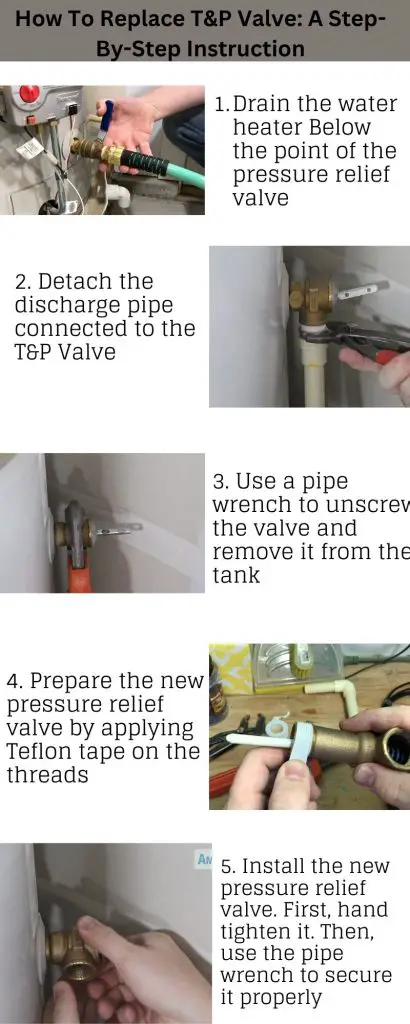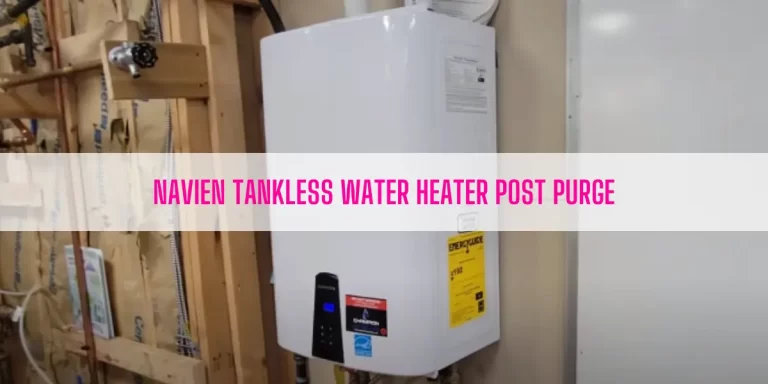Water Heater Pressure Relief Valve 101
Water Heater Pressure Relief Valve is an essential part of a water heater. It alleviates excess pressure that builds inside the tank to protect the unit from exploding. This article will describe every in and out of the T&P valve, including:
- What is a T&P valve on a hot water heater?
- How does a pressure relief valve work
- Water heater pressure relief valve failure symptoms
- And a lot.
Table of Contents
- Key Takeaways:
- What Is a Water Heater Pressure Relief Valve or T&P Valve?
- How Does A Water Heater Pressure Relief Valve Work?
- What Are the Symptoms of Water Heater Pressure Relief Valve Failure?
- How Do You Test the Water Heater Pressure Relief Valve?
- Water Heater Pressure Relief Valve Replacement: A Step-by-Step Instruction
- Water Heater Pressure Relief Valve Replacement Cost
- FAQs
Key Takeaways:
- A water heater pressure relief valve (T&P valve) is a safety device that releases excess pressure and heat from the tank to prevent explosion. It opens automatically when pressure or temperature gets too high.
- The T&P valve has a spring-loaded mechanism and temperature sensor. It releases pressure through a discharge pipe when activated.
- Symptoms of a faulty T&P valve include leaking, high-pitched noises, failure to discharge during testing, and water temperature continuing to rise.
- Test the T&P valve annually by lifting the lever to open it and checking that water flows out through the discharge pipe.
- Replace the pressure relief valve if it fails the test. Turn off power/gas, drain tank, detach and replace valve, reattach discharge pipe, check for leaks.
- Overall replacement cost for the T&P valve is $200-$300, including labor.
- T&P valves can last 5-8 years. Test annually and replace every 3-4 years as preventative maintenance. A clogged or misaligned valve can fail.
What Is a Water Heater Pressure Relief Valve or T&P Valve?

A water heater pressure relief valve or T&P valve is a safety device. As the name suggests, it releases pressure when the temperature inside the tank exceeds the preset level.
Location: You can find the temperature and pressure relief valve on the top or side of the tank. The manufacturer typically installs the T&P valve vertically or horizontally, based on the water heater’s design.
Design: The T&P valve is made of durable materials (brass or stainless steel) and has a spring-loaded mechanism to control its operation. It also includes a temperature-sensing element that responds to changes in water temperature. If the water temperature gets too hot, the valve will release excessive pressure through a discharge port. The valve has a connection point for the discharge pipe.
Function: The temperature and pressure relief valve helps release excess pressure from the tank. It opens automatically when the pressure inside the tank becomes too high or the temperature goes above 210 degrees.
How Does A Water Heater Pressure Relief Valve Work?
The T&P valve continuously monitors the pressure and temperature inside the water heater’s tank. If the valve senses too much pressure like 150 PSI or high water temperature up to 210 degrees, it gets triggered to act.
Once activated, the lever or spring-loaded mechanism opens the valve automatically to let the excess pressure escape from the tank. This prevents the tank from getting over pressurized, which could cause a water heater explosion.
The released pressure or steam then goes through a discharge pipe, which directs water away from the unit or surroundings. This process will continue until enough pressure is released for the valve to close.
What Are the Symptoms of Water Heater Pressure Relief Valve Failure?
Here are the signs that indicate the failure of the pressure relief valve.
Leaking T&P Valve: If you observe the pressure relief valve is leaking, understand the valve is at fault. A temperature and pressure relief valve can fail due to a worn-out seal or when the valve gets clogged with debris.
High-pitched Noises: Water heaters are sensitive to water pressure. You will hear high-pitched or rattling noises from the unit when the pressure relief valve is at fault.
No discharge during testing: Operating the pressure relief valve will help you determine whether the valve is working correctly. When you open the valve but no water discharges through the discharge pipe, I bet the valve is defective or clogged.
Water Temperature Keeps Rising: If the water temperature in the tank keeps rising above the normal level, it could be a sign of a bad pressure relief valve. The pressure relief valve is designed to release excessive heat. When it fails to work, the temperature in the tank will get too hot.
How Do You Test the Water Heater Pressure Relief Valve?
Once a year, you should test the pressure relief valve by operating it manually. Follow these steps to operate the T&P valve and see how it works:
- Locate the T&P valve on the side or top of the tank.
- Put a plastic bucket or container under the discharge pipe.
- Lift the lever to hold the valve open for a few seconds. You will hear a hissing sound and see the water force out of the valve and go through the discharge pipe. It indicates the valve is working as intended.
- Release the lever and it should snap back to its position.
If you fail to close or open the valve, understand the T&P valve is defective and needs to be replaced immediately.
Water Heater Pressure Relief Valve Replacement: A Step-by-Step Instruction
Once you test the T&P valve and it doesn’t work as intended, you must replace it. Here is the step-by-step guideline you can follow to replace the pressure relief valve like a champ:

- Turn off the electric supply to the water heater at the circuit breaker. If you have a gas-powered water heater, turn off the gas supply. Don’t forget to shut off the water supply to the unit. Then, leave the unit for several minutes to let it cool down.
- Locate the pressure relief valve and the discharge pipe connected to it. You can find it on one side or top of the tank.
- Drain the water heater below the point of the temperature and pressure relief valve. Regarding this, attach a garden hose to the drain valve and place the other end to the nearest floor drain. Open the drain valve.
- After draining the tank, detach the discharge pipe attached to the T&P valve.
- Use a pipe wrench to unscrew the pressure relief valve. Then, remove the valve from the tank.
- Install the new pressure relief valve. Ensure that the replacement part matches the old one. Don’t forget to apply the Teflon tape to the threads of the new PRV to ensure a proper seal.
- Tighten up the pressure relief valve using a pipe wrench. Avoid to overtighten the pressure relief valve.
- Reattach the discharge pipe to the pressure relief valve.
- Turn on the water supply and check for leaks around the pressure relief valve and the discharge pipe.
- Restore power to the unit.
- Test the T&P valve manually to verify that water is running through the discharge pipe.
Water Heater Pressure Relief Valve Replacement Cost
You should spend $200-$300 to replace the pressure relief valve. However, if you have a bit of plumbing and mechanical knowledge, you can save on labor costs. The replacement part will cost you $15-$20. Take proper precautions when you’re going to replace the T&P valve yourself.
FAQs
Is it OK to open the pressure relief valve on the water heater?
You should open the pressure relief valve periodically to test whether the valve is working correctly or not. In normal occurrence, the valve should be in the closed position. If you open it all the time, the valve will keep leaking water and flood your home. On the other hand, if you keep it closed, the valve fails to relieve pressure that builds up in the closed system. This could cause a water heater explosion as a result.
Can a pressure relief valve be clogged?
Yes, a pressure relief valve can become clogged. Dirt, debris, lint, or sludge can block the T&P valve. Even misalignment of the valve can make it stick.
What happens when a water heater pressure relief valve fails?
A defective pressure relief valve can cause the water heater to explode. Due to a failed valve, the pressure that builds up inside the tank can’t escape. As a result, the pressure keeps rising and bursts out the water heater. To avoid such a scenario, operate the pressure relief valve periodically. Replace the valve if you fail to close or open the valve.
How long does a water heater pressure relief valve last?
A pressure relief valve can last up to 5-8 years. However, hardness of water can affect the lifespan of the T&P valve. I recommend you test the pressure relief valve once a year and replace it every 3-4 years.

Sohel Rana is an expert writer (Of course, the owner and founder of this blog) on plumbing, HVAC, and appliance repair & troubleshooting. Since 2020, he has written on these specific topics, though his writing journey began in 2018.







